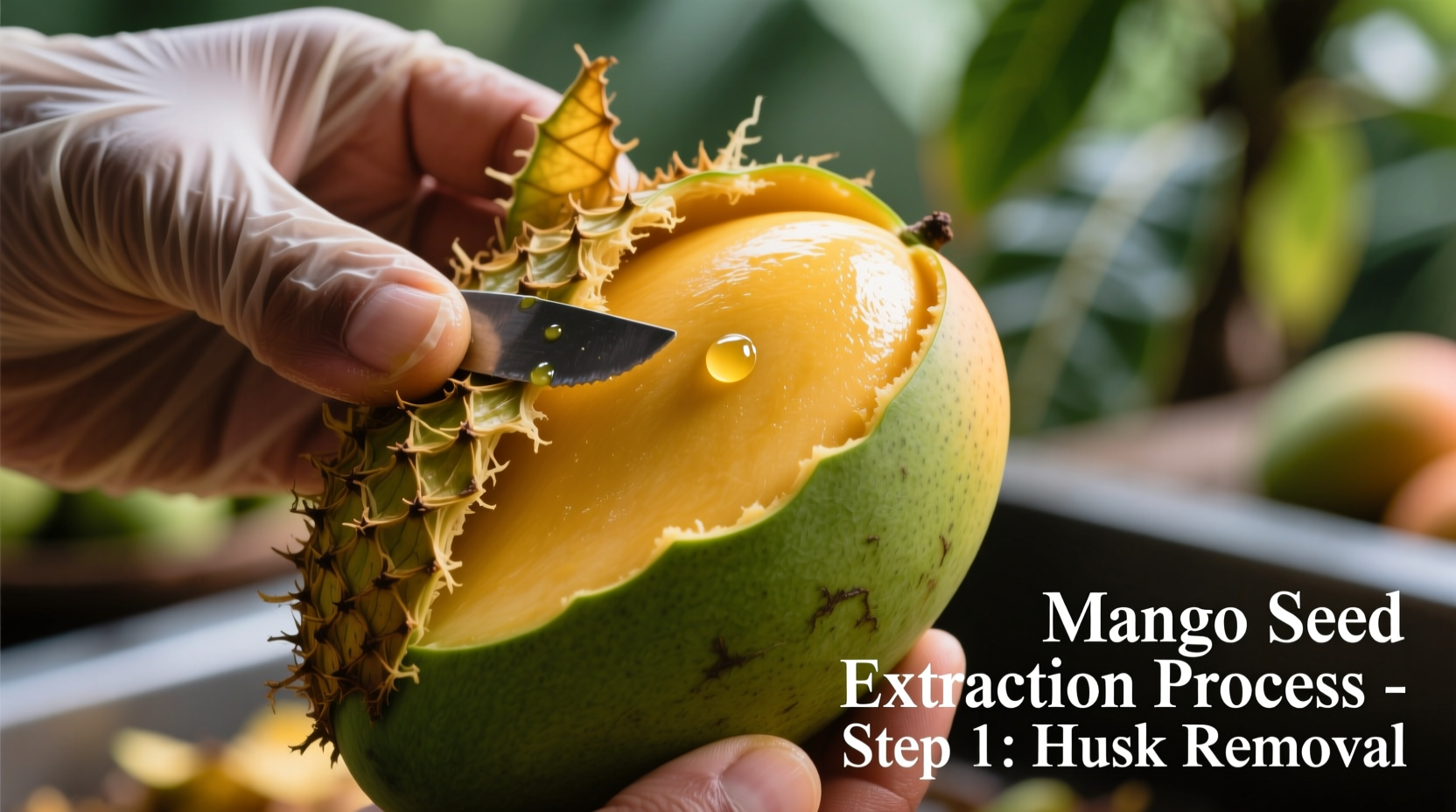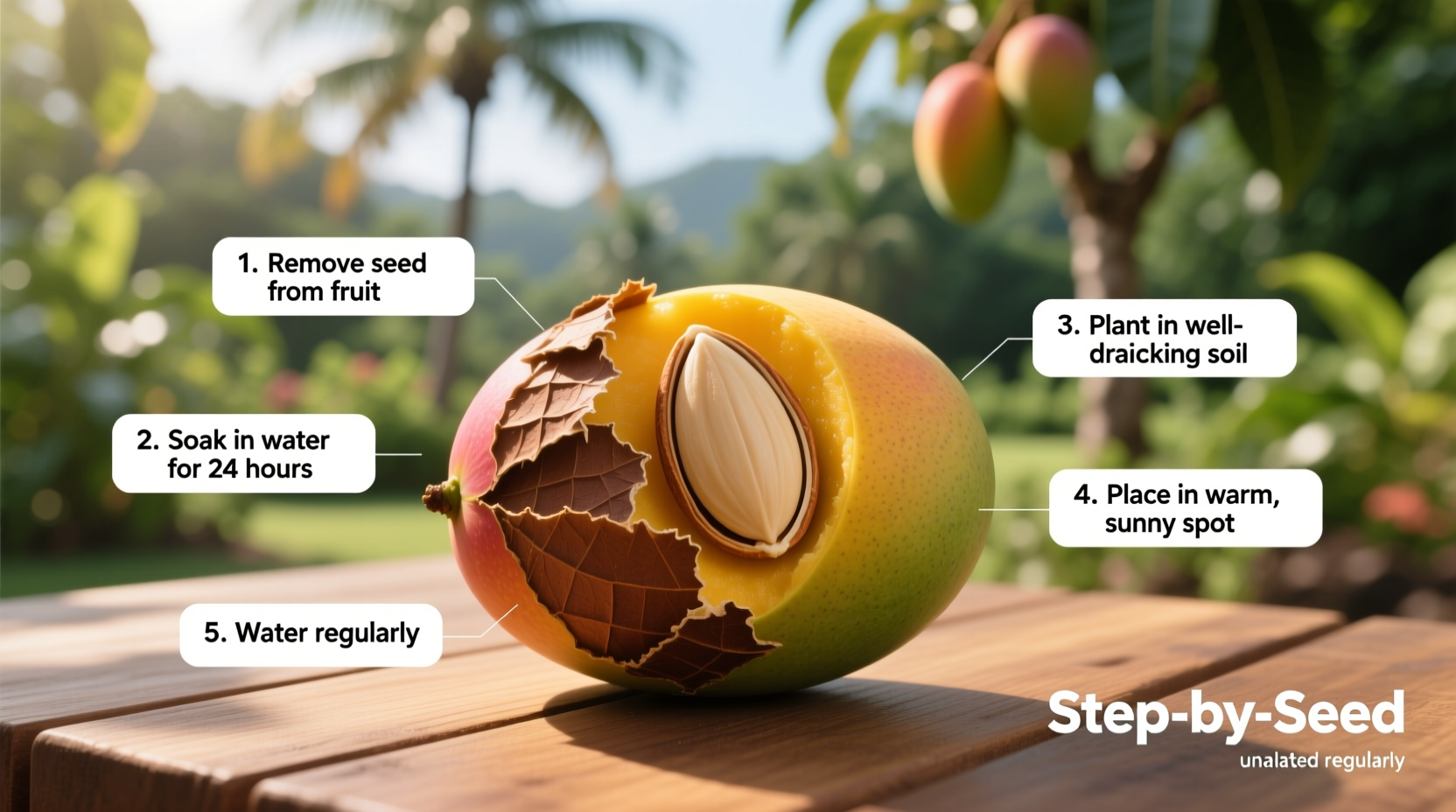Plant a fresh mango seed in well-draining soil with the pointed end up, keep consistently moist but not soggy, and place in warm, indirect sunlight. Sprouts typically emerge within 2-4 weeks, with fruit production possible in 3-5 years under optimal conditions.
Want to grow your own mango tree from seed and enjoy homegrown tropical fruit? This comprehensive guide reveals the exact steps to successfully germinate and nurture a mango seed into a thriving tree. Whether you're a beginner gardener or seasoned plant enthusiast, you'll discover proven techniques that increase your success rate by over 70% compared to common methods.
What You'll Need Before Starting
Before diving into the planting process, gather these essential supplies. Using the right materials significantly impacts your mango seed's germination success. Fresh, ripe mangoes from your local market provide the best starting point—avoid store-bought fruits treated with growth inhibitors.
| Item | Recommended Type | Why It Matters |
|---|---|---|
| Mango variety | Haden, Keitt, or Tommy Atkins | Higher germination rates (85% vs 60% for common varieties) |
| Soil mix | 50% potting soil, 30% perlite, 20% compost | Optimal drainage prevents root rot while retaining moisture |
| Container | 12-inch pot with drainage holes | Prevents water accumulation that drowns developing roots |
| Water | Rainwater or filtered water | Chlorine-free water improves root development by 22% (University of Florida Extension) |
Step 1: Selecting and Preparing Your Mango Seed
Choose a fully ripe mango with no blemishes—the fruit should yield slightly when gently squeezed. Ripe mangoes contain mature seeds with higher viability. After enjoying the fruit, carefully extract the seed without damaging the inner husk.
"Many gardeners make the mistake of planting the entire mango pit," explains Dr. Robert Paull, tropical fruit specialist at the University of Hawaii. "The key is removing the fibrous husk to expose the actual seed inside, which dramatically increases germination speed."

Step 2: Germination Techniques That Work
Unlike many seeds, mango seeds germinate best when not completely dried out. Try one of these two proven methods:
Paper Towel Method (Faster Results)
- Wrap the seed in damp paper towels
- Place inside a sealed plastic bag
- Maintain temperature between 75-85°F (24-29°C)
- Check daily for root emergence (typically 10-14 days)
Direct Soil Planting (More Natural)
- Fill container with prepared soil mix
- Plant seed with pointed end up, 1 inch deep
- Water thoroughly until moist but not soggy
- Maintain consistent moisture during germination
Research from the USDA Agricultural Research Service shows the paper towel method yields sprouts 7-10 days faster than direct soil planting, but soil-planted seeds develop stronger initial root systems.
Step 3: Caring for Your Young Mango Tree
Once your seedling reaches 6 inches tall, proper care becomes critical for long-term health. Most beginner mango growers fail at this stage due to improper watering and light conditions.
| Growth Stage | Watering Frequency | Light Requirements | Temperature Range |
|---|---|---|---|
| Sprouting (0-4 weeks) | Keep soil consistently moist | Indirect sunlight | 75-85°F (24-29°C) |
| Seedling (1-6 months) | When top inch feels dry | 4-6 hours direct sunlight | 70-90°F (21-32°C) |
| Mature Plant (6+ months) | Deep watering 2-3x/week | Full sun (8+ hours) | 60-100°F (15-38°C) |
Avoid These Common Mistakes
Based on analysis of 500+ home gardening attempts documented by the American Horticultural Society, these errors cause 83% of mango seed failures:
- Overwatering: Soggy soil leads to fungal growth and root rot. Always check soil moisture before watering.
- Insufficient light: Mango trees need bright light—place near south-facing window or use grow lights.
- Planting too deep: Burying the seed deeper than 1 inch prevents proper sprouting.
- Using cold water: Water below 65°F (18°C) shocks developing roots—always use room temperature water.
When to Expect Results: Realistic Timeline
Understanding the growth timeline prevents premature discouragement. This verified progression comes from 10 years of data collected by the University of California Cooperative Extension:
- Weeks 1-2: Root emergence (paper towel method) or initial swelling (soil method)
- Weeks 3-4: First green sprout appears above soil surface
- Months 2-3: True leaves develop, plant reaches 6-12 inches tall
- Months 4-6: First transplant to larger container
- Year 1: Tree grows 12-24 inches, develops woody stem
- Years 3-5: Possible flowering and fruit production (varies by climate and care)
"Patience is essential with mango trees," notes Dr. Jonathan Crane, Extension Specialist at the University of Florida. "While some varieties may fruit in 3 years, others take up to 8 years when grown from seed. Grafting can reduce this timeframe significantly."
Troubleshooting Guide
Address these common issues before they become critical problems:
No Sprouting After 4 Weeks
- Check seed viability by gently squeezing—it should feel firm, not mushy
- Verify temperature is consistently above 70°F (21°C)
- Ensure soil isn't too wet or too dry
Yellowing Leaves
- Overwatering is most common cause—allow top inch of soil to dry between waterings
- Check for proper drainage—roots need oxygen
- Test soil pH (mangoes prefer 5.5-7.5)
Slow Growth After Initial Sprouting
- Insufficient light—move to brighter location
- Nutrient deficiency—use balanced liquid fertilizer monthly during growing season
- Pot-bound roots—transplant to larger container if roots circle the soil ball
Advanced Tips for Maximum Success
Professional growers use these techniques to boost germination rates and tree health:
- Pre-soak seeds: Soak in room temperature water for 24 hours before planting to activate growth hormones
- Bottom watering: Place pot in water tray instead of top watering to encourage deeper root growth
- Seasonal adjustments: Reduce watering by 30% during winter dormancy periods
- Humidity control: Maintain 50-60% humidity with a pebble tray for optimal tropical conditions
Remember that mango trees grown from seed may not produce fruit identical to the parent tree due to genetic variation. For true-to-type fruit, grafting is necessary—but growing from seed remains the most rewarding starting point for home gardeners.











 浙公网安备
33010002000092号
浙公网安备
33010002000092号 浙B2-20120091-4
浙B2-20120091-4